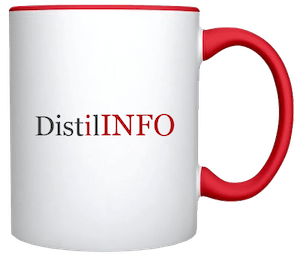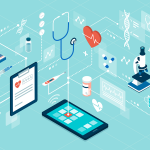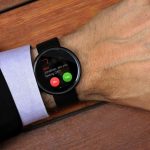Veronika Vartanova is a mobility researcher at Iflexion, a software development company based in Denver, Colorado. She writes on the latest trends in mobile app development, AR and VR business integration, and mobile-first digital transformation.
Wearables have come a long way from being merely entertaining to bringing in tangible health benefits.
Early on, bands with basic functionality were mostly appreciated by fitness enthusiasts and professional athletes. A few years later, the variety and capabilities of wearables evolved way beyond counting steps taken and calories burnt. Next generations of smart clips, rings and watches expanded their data collection and analytical abilities toward overall health and activity awareness. They began identifying individual patterns related to the user’s mood, sleep quality and vitals.
As soon as wearables became more functional, they evolved from the “sports-only” category to personal smart gear. Such democratization surged the adoption and attracted multiple user groups with goals beyond explicit association with sports and fitness.
Want to publish your own articles on DistilINFO Publications?
Send us an email, we will get in touch with you.
Now, wearables are rather trivial, marketed as personal devices for anybody who is interested to make more informed choices about their health and lifestyle. They stand in one row with other essential things some people can’t leave their homes without, such as a wallet, a smartphone, headphones or keys.
This trend of personalized health tracking and wellness awareness fell in line with the value-based care paradigm and its focus on precision medicine. The current healthcare industry aspires to use wearables as a primary data source to create highly personal and flexible patient treatment plans, allowing the introduction of timely therapy modifications based on slight changes in health patterns.
Additionally, wearables can also serve to promote patients’ responsibility toward their care routines and encourage more informed patient-physician interaction. Smart gear manufacturers and medical-grade software vendors also rely on custom software solutions to make wearables suitable for clinical use.
How wearables can be used in precision medicine
While clinical researchers and decision makers can benefit from a wide range of wearables to support their efforts, it all comes down to two major groups of sensors collecting particular biological signs.
Physiological sensors
This group of sensors measures the biological signs with electrical, thermal, acoustic and optical components, specifically:
- Bodily functions: gut and respiratory activity
- Vital signs: blood pressure, heart rate, temperature, blood oxygen saturation levels (SpO2) and more
- Bioelectrical activity: bioimpedance to measure body fat and muscle mass, electrodermal activity (EDA) for emotional assessment, electrocardiography (ECG) for cardiac function tracking, electromyography (EMG) for gait analysis, and electroencephalography to assess brain activity (EEG)
Both consumer-facing and ambulatory-use wearables enable numerous biological tracking options. Some of the examples include:
- Apple smart watches with the ability to generate ECG, detect falls and abnormal heart rhythms
- Bloomlife patch sensors for prenatal contraction monitoring
- Abdominal patch from G-Tech Medical, analyzing gastrointestinal motility and facilitating diagnostics of digestive disorders
- Ava’s fertility tracker with heart rate, temperature and stress level monitoring capabilities
Biochemical sensors
Biochemical sensors convert a biological or chemical analyte into an electrical signal, measuring a variety of signs that can be correlated with a patient’s current health status and changes in patterns. In particular, these sensors can assess pH levels, alcohol, glucose, electrolytes (e.g., lactate, sodium, potassium) and more species. The biochemical data they acquire can be used to define new digital biomarkers and enhance current ones.
Wearables that enable biochemical analysis are considered mostly for clinical research and ambulatory use. For example, a non-invasive clip from Glucowise for glucose monitoring, or Epicore’s patches for sweat analysis to evaluate skin health and physiology. It also must be said that a major part of these wearables with biochemical sensors is still at the R&D or premarket certification stages.
Using aggregated data for patient care: case studies
Depending on a care point across the care delivery cycle, clinical researchers and decision makers can either benefit from data gathered separately via physiological and biochemical sensors or harness the combined readings from hybrid-sensing wearables. For example, initial diagnosis verification can be supported by physiological sensors. But the therapy itself or progress evaluation may require richer data inputs.
The collaborative effort from researchers at Harvard Medical School, Tufts University and Purdue University shows how the combination of different sensors can create a systematic approach toward patient treatment. The team is working on a smart bandage, not only to monitor the healing process but also facilitate it. The bandage is designed for use on chronic wounds originating from such non-traumatic conditions as diabetes or burns. It features pH and temperature sensors to evaluate the wound environment along with the drug-releasing component that is activated if the wound’s pH status surges above 6.5. Temperature readings may additionally signal that the damaged tissue doesn’t heal properly and initiate medication administration.
In another study of using wearables for personalized medicine, researchers from Cardiogram used their proprietary DeepHeart neural network and aggregated data from consumer wearables with physiological sensors to enable early diagnosis for a range of conditions. They already published a series of successful studies in creating digital biomarkers for screening for hypertension (82% accuracy), atrial fibrillation (97% accuracy) and sleep apnea (90% accuracy).
Wearables driving the future of precision medicine
With their ability to track health continuously within and outside care facilities, wearables hold a significant potential to enhance current precision medicine initiatives.
Combining a range of devices, both consumer-facing and clinical-grade, researchers and decision makers can build connected networks with all-round insights about each individual patient throughout the care delivery cycle. From early diagnosis and personalized therapy to tracking responses and timely updating treatment plans, health specialists can achieve the highest health outcomes possible for a particular case.
From the patient’s perspective, wearables already give their users a sense of data ownership, even at the basic level of counting steps and calories. With their ability to grasp even more insights about their health status and its changes during treatment, patients can take a more active part in the care delivery cycle. Being more aware of their general wellness and particular biological signals, these patients can start actively engaging in the dialogue about their therapy options. They will be able to consider their possible health outcomes in the long run, and understand that both their opinion and actions matter.
Date: August 12, 2019
Source: MobiHealthNews









